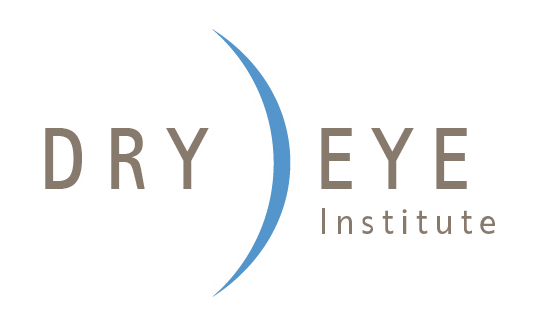What Is Dry Eye Disease?
With every blink of the eyes, tears spread across the outer surface, or cornea. They are necessary for maintaining eye health, as well as providing clear vision. Not only do tears help keep the eyes wet and smooth, but they also reduce the risk of eye infections and wash away foreign matters.
The eye’s tear film is composed of three layers. Each layer of the film must be working properly to ensure the eye remains lubricated and moisturized. Both the quantity and quality of tears are important, because we rely on them to feel comfortable. If the ocular surface does not receive the proper amount of quality tears, a chronic condition called dry eye disease is the result.
Dry eye disease is a common condition that affects nearly 16 million (one out of every seven) Americans over the age of 21 each year. It occurs when the eyes do not produce enough tears or produce low-quality tears. When tear production is not in balance, the patient is likely to feel uncomfortable. However, the specialists at the Dry Eye Institute of St. Louis are trained to diagnose and properly treat each patient’s dry eye condition, depending on their specific needs.
Who Is More Likely to Have Dry Eye Disease?
Anyone can contract dry eye disease, but certain groups of people are more likely to experience the condition. The groups include:
- Individuals over the age of 50
- Female patients
- Those who wear contact lenses
- Patients with autoimmune conditions, such as lupus
- People who do not receive enough vitamin A (found in carrots) or omega-3 fatty acids (found in fish)
Often, dry eye disease is chronic, meaning that no cure is currently available. Treatments, such as over-the-counter eye drops and prescription lubricants, lessen the symptoms.
The Symptoms of Dry Eye
Those who have dry eye disease can experience a variety of symptoms, including:
- Stinging or burning sensation in the eyes
- Scratchy feeling, like there’s something in the eyes
- Light sensitivity
- Red eyes
- Blurred vision
- Stringy mucus in and around the eyes
- Eye fatigue
- Difficulty wearing contact lenses
- Difficulty driving at night
- Watery eyes (the body’s response to irritation)
If you experience any of the above symptoms on a regular basis, it’s important to contact an eye specialist as soon as possible. Not only will they assist you in diagnosing and treating your condition, but you will also receive relief.
Dry Eye Disease Causes
Several activities and other medical conditions can cause dry eye disease. The two main issues that can cause the condition are decreased tear production and low-quality tears. Those that contribute to decreased tear production include:
- Medical conditions, such as allergic eye disease, blepharitis (inflammation of the eyelids), rheumatoid arthritis, thyroid disorders, lupus, and vitamin A deficiencies
- Medications, including decongestants, antihistamines, diuretics, antipsychotics, medicines that lower cholesterol, hormone replacement therapies, drugs for high blood pressure, gastrointestinal issues, and acne, those for Parkinson’s Disease, and birth control
- Aging
- Desensitivity of the cornea from contact lens usage or laser eye surgery (although this is most often temporary)
- Hormones, especially in women following menopause
Secondly, the production of low-quality tears can result from the following:
- Clogging of eyelid glands
- Eye allergies
- Blinking less often from prolonged screen use
- Wind, smoke, air conditioning, dehumidifiers, high altitudes, hot or dry air
- Eyelids turning outwards or inwards
- Preservatives in eye drops
Although there are a variety of causes, each patient with dry eye disease wishes for relief. Luckily, treatment is effective when performed correctly and meets each individual’s needs.
Dry Eye Treatment St. Louis
Just as there are multiple causes of dry eye disease, so too are there multiple treatment options. In addition, the severity of symptoms also plays a role in determining the appropriate treatment plan. At the Dry Eye Institute of St. Louis, our goal is to identify the root cause of each patient’s dry eye disease symptoms so that we can provide the best, most effective treatment possible. Below are the treatment options available for dry eye disease.
Over-the-Counter Dry Eye Treatments
For most patients with occasional or mild dry eye symptoms, over-the-counter eye drops suffice. Whether they are preservative (meaning they have a long shelf life) or non-preservative (meaning they come in disposable vials), over-the-counter eye drops simply moisten the eyes. Although patients will likely need to apply the drops several times a day, most find relief from the extra moisture.
Another over-the-counter treatment for mild dry eye disease is ointment. When compared to traditional eye drops, ointments cover more surface area on the eyes and thus provide greater relief. However, they tend to cloud vision, so it is recommended to apply ointments before bed each night.
Dry Eye Prescriptions
Many prescriptions are available to those who suffer from dry eye disease. The type of medication a patient receives is dependent upon the root cause of the condition. In some cases, however, an underlying health condition can create symptoms of dry eyes. When this occurs, sometimes a simple change of medication can provide relief.
Below are the main types of prescription medications for dry eye disease:
- Medications to reduce eyelid inflammation: As eyelids swell along the edges, oil glands become blocked and therefore are unable to provide necessary oil to the tears. Whether they be taken by mouth, via topical steroid eye drops, such as Xiidra, or through ointments, antibiotic medications can work to reduce eyelid inflammation.
- Eye inserts that work like artificial tears (eye drops): For those with moderate to severe dry eye who have attempted to use over-the-counter eye drops to no avail, eye inserts may be a good alternative. The inserts resemble a clear grain of rice, and are placed between the lower eyelid and eyeball once a day. They then work to release a substance used in artificial tears to lubricate the eyes.
- Eye drops to control cornea inflammation: When inflammation occurs on the surface of the eyes, prescription eye drops, such as Restasis, that contain cyclosporine or corticosteroids can control it.
- Eye drops made from the patient’s blood: Although seemingly odd at first, eye drops made from the patient’s blood may be an option for when the dry eye symptoms are so severe, no other prescription treatment option provides relief. The autologous blood serum drops are created when a sample is stripped of its red blood cells and then is mixed with a salt solution.
- Tear-stimulating medication: Available in gel, pill, or eye drop form, tear-stimulating medication, called cholinergics, can increase tear production.
Procedures for Dry Eye
When symptoms of dry eye disease are persistent and medications do not provide ample relief, a medical procedure may need to be performed. Most procedure treatments are quick and relatively painless, depending on the cause and severity of symptoms.
The available procedures for treating dry eye disease include:
- Closing the patient’s tear ducts: In cases where dry eye symptoms are caused by the rapid evaporation of tears, completely or partially closing the ducts can be a great option. Since tear ducts serve to drain tears away from the eyes, the procedure aims to keep tears on the surface longer. Punctal plugs are short-term solutions, and the use of heat provides more long-term solutions.
- Thermal treatments: Two specific thermal procedures offered at the Dry Eye Institute include iLux and LipiFlow. Both devices apply heat to the meibomian glands in an effort to allow increased secretion of oil to the eyes’ surface; however, iLux targets specific problem areas, whereas LipiFlow treats the glands as a whole. Your dry eye specialist will recommend the best treatment option for you.
- Special contact lenses: When dry eye is mainly caused by losing tears too quickly, scleral lenses or bandage lenses can help protect the surface of the eyes as well as trap moisture.
- Light therapy and eyelid massage: A technique called intense-pulsed light therapy followed by a gentle eyelid massage has been proven to reduce symptoms in patients with severe dry eye disease. This procedure includes placing a device resembling contact lenses over the surface of the eyes and under the eyelids, as well as another shield placed outside, then applying light and a gentle eyelid massage.
Lifestyle Changes
Some cases of dry eye disease are caused by environmental surroundings. Depending on the specific aspect of the patient’s environment that is causing the irritability, the following lifestyle changes can be implemented:
- Using a humidifier to moisten the air in the home
- Avoiding smoking and limiting exposure to secondhand smoke
- Blinking often when focusing on a task for long periods of time (reading, looking at a computer screen)
- Drinking water throughout the day to keep the body hydrated
- Wearing sunglasses with side shields to prevent tears from evaporating too quickly
- Including omega-3 fatty acids and/or fish oil tablets in the diet to increase nutritional support for oil glands
Get Relief From the Experts at the Dry Eye Institute
When you experience any symptom of dry eye disease, it’s hard to concentrate on your daily activities. Clear vision is something many individuals take for granted. It’s crucial to see an eye specialist when you begin to notice issues.
Since dry eye disease has a variety of symptoms, it’s critical to identify the root cause in order to provide the most effective treatment plan. The experts at our dry eye treatment center possess the knowledge and specialized equipment to perform important testing that can determine each specific dry eye condition.
Although no permanent solution is available, our partnership with manufacturers provides early access to new medications. Therefore, you can rest assured that your treatment plan is unique to you and your needs. Our team thoroughly explains your condition and why specific medications are recommended. You will leave with the hope of significantly reducing your dry eye symptoms.
Dry eye disease is a complex condition, so it’s important to request the help you need. Our specialists at the Dry Eye Institute are experts in the field, and will investigate the root cause of your condition. Give us a call today at 314-292-8088 or schedule your appointment with Dr. Bourn online to start your journey to relief.
We can Help Your Dry Eyes
Schedule an Appointment Today
12101 Woodcrest Executive Drive, Suite 150
Saint Louis, Missouri 63141


